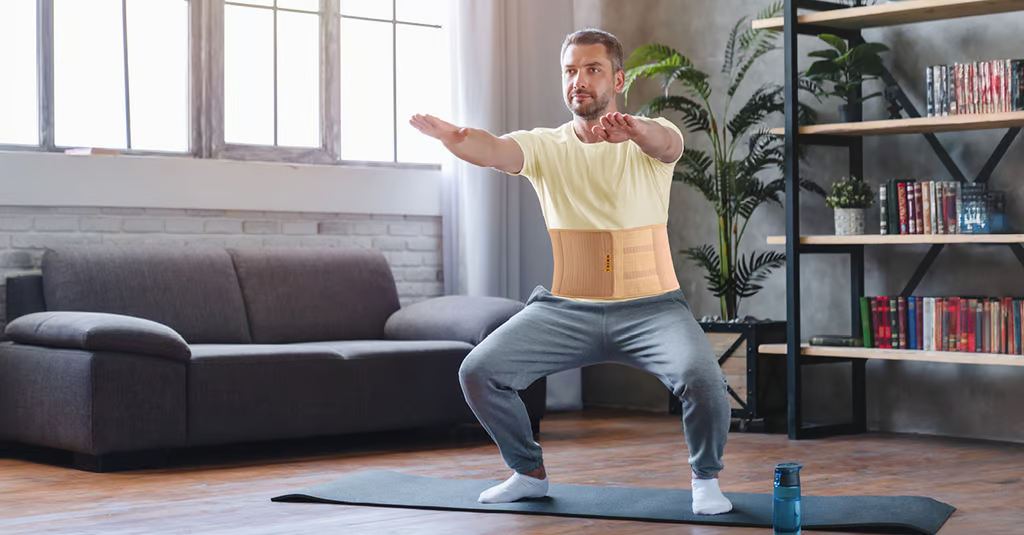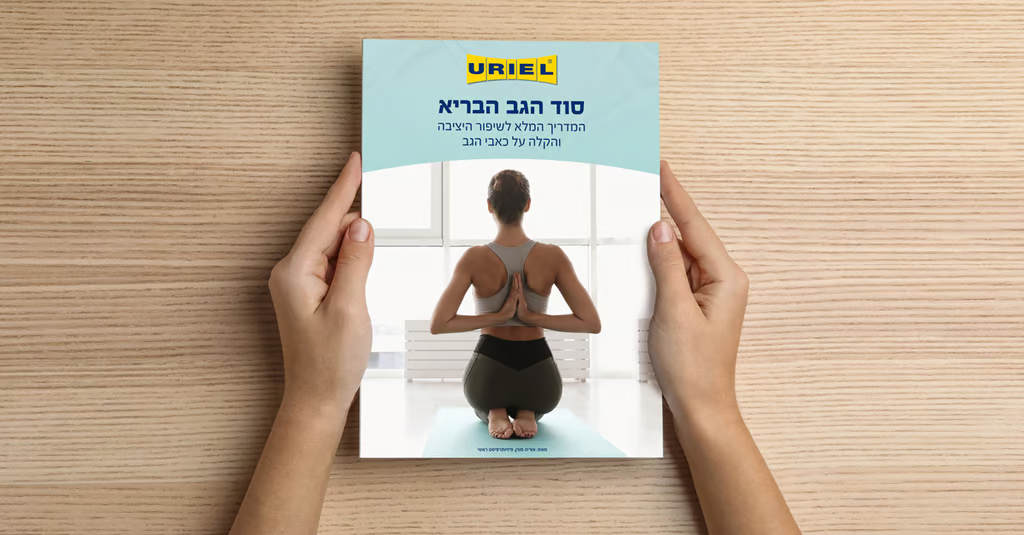Lower back pain is one of the most common types of pain in the world. Studies show that about 80% of the population Suffering Painful back lower At some point in her life. The pain can result from a variety of factors such as sports injuries, overuse, posture problems, pregnancy and childbirth, obesity, and specific medical problems such as herniated discs, infections, or injuries.
According to data from the Israel Medical Association, lower back pain is considered the second most common complaint among family doctors and is one of the most common causes of absence from work in the Western world. According to data from the World Health Organization (WHO), in 2020, lower back pain affected 619 million people worldwide and it is estimated that the number of cases will increase to 843 million by 2050.
A survey by the Research Department of the Institute for Safety and Hygiene, published in YNET in 2022, examined the main types of morbidity in the workplace, showing that about 81% of workers reported pain or discomfort in the musculoskeletal area, and 45% required physiotherapy or medical treatment as a result.
The lower back (lumbar region) is a busy area containing many structures – vertebrae, discs, muscles, tendons, nerves and soft tissues. When an injury occurs or excessive pressure is applied to one or more of these components, lower back pain can develop and affect function and quality of life.
Therefore, it is important to recognize early signs of lower back pain, prevent the causes of its worsening, and implement effective tips and coping methods to relieve the pain, prevent a chronic condition, and also to get out of such a situation.
Correct and appropriate treatment will allow a return to a normal lifestyle and prevent the recurrence of pain – or at least will ease the intensity of the pain. Here are 6 effective tips that will help relieve lower back pain.
Frequent traffic and breaks
After a long period of sitting or standing, it is important to get up, move around, and take short active breaks. You can start with a short walk for a few minutes, bending your back and touching the floor with your palms, squatting, and more. Simple flexibility exercises and back rotations can release tension in the spine and relieve lower back pain.
It is important to get up and move every 30-45 minutes during the workday. Movement improves blood flow to the back area and prevents muscle spasms. Even occasional short walks or going up and down stairs during the day can relieve the strain on the skeleton and muscles and reduce or prevent pain.
Improving sitting habits
For sedentary workers (office work), it is important to pay close attention to sitting posture to prevent unnecessary strain on the lower back. First, make sure you have a quality and comfortable chair, with a firm backrest to support the lower back and neck. For those who are already developing pain or discomfort, it is also advisable to use a small pillow behind the lumbar area to maintain a healthy curve (lordosis) of the spine.
Your legs should be flat on the floor, with your knees at a 90-degree angle to your body. It's important not to cross your legs constantly. The computer screen should be placed about 60 cm from the eyes, and at eye level - so that the neck does not have to be bent.
Back muscle massage
A gentle massage of the lower back area can bring significant relief from chronic pain. The massage should be done in the center and sides of the lower back using gentle, relaxing circular strokes. You can also use home massage devices.
Exercises to strengthen the back muscles
In addition, there are several recommended exercises to strengthen and improve the flexibility of the back and trunk muscles, without equipment or weights:
- Swimmer – Lying on your stomach, lifting your chest and making circular movements with your arms, from your waist to above your head, and back.
- Opposite arm and leg stretch – Standing on six, and repeatedly lifting the left leg back together with the right arm extended forward, and vice versa.
- bridge – Lying on your back with your legs bent and your feet on the mattress, and repeatedly raising and lowering your buttocks toward the ceiling.
- Squat – Standing and squatting return to a position where the buttocks "float" between the feet.
It is important to perform the exercises gradually, gently, and under professional guidance to prevent injury. A combination of massage and muscle strengthening will help release pressure and prevent prolonged lower back pain.
Using supportive back wraps
Professional back belts can support the spine, stabilize it, and prevent unwanted bending and strain. At URIEL, we offer A variety of quality back belts , such as an elastic back belt combined with 4 stabilizing rods. The belt is made of elastic and airy fabric with a cotton towel, and is equipped with support rods along the spine to relieve mild-moderate pain.
Another example is A cotton back belt combined with 4 back stabilizers made of support rods along the spine . The belt is 20 cm high, and is made of a knitted, flexible cotton fabric. The belt helps relieve tension and treat pain such as herniated discs and lower back pain. Using such belts is especially recommended in cases of more acute pain.
There is another large variety of back support belts, so you can choose and adapt the product to the patient's need and type of pain or status: A belt with double closure , for those suffering from lumbar back pain, lumbago, spondylolysis, disc pain, and more; a belt also with straps for customization; a shoulder straightener with a padded strap system that surrounds the entire upper body; a pregnancy belt; and more.
A variety of solutions for lower back pain for pregnant women >>
Medical care and medications
In severe cases of lower back pain, it is a good idea to see your family doctor or orthopedic surgeon for a comprehensive examination. Your doctor may be able to recommend specific treatment, which may include painkillers and anti-inflammatory medications, steroid injections, or targeted physical therapy. It is important not to continue with the pain without appropriate treatment.
In conclusion - dealing with lower back pain
In addition to the tips listed here, choosing a healthy diet, maintaining a healthy weight, getting a good night's sleep, regular physical activity, and avoiding smoking can also contribute greatly to preventing back pain and maintaining the flexibility and health of the back muscles and vertebrae over time.
Lower back pain does not have to be a fateful experience, and it can be lived with better by implementing the right approach, appropriate aids, and treatment tailored to each case.
The article was written with the assistance of Uria Moran, a physiotherapist with a bachelor's and master's degree in physiotherapy (BPT & M.SC). Development Manager at URIEL, a company that manufactures and develops orthopedic accessories.
Sources :


